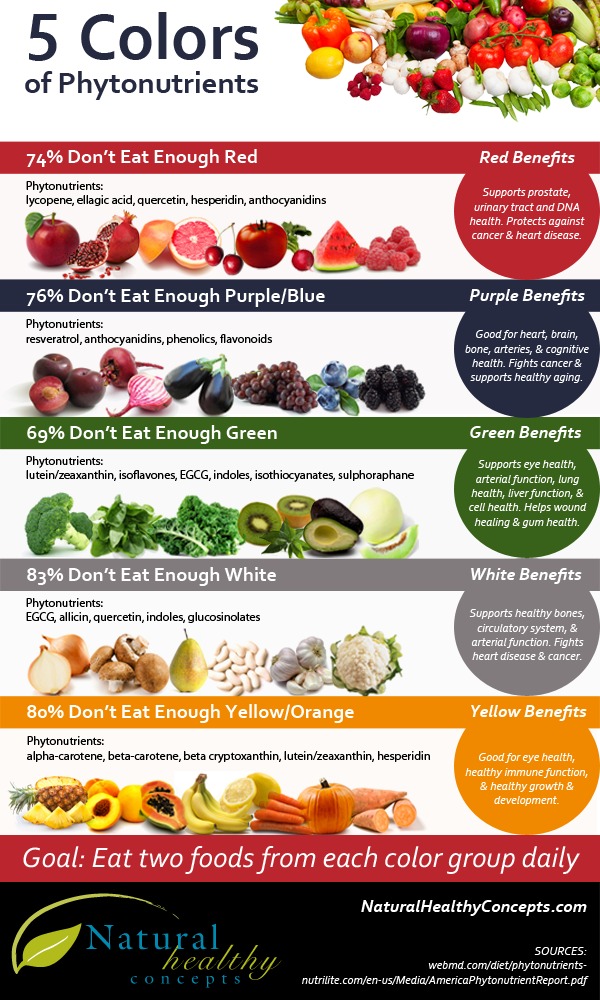According to World's Healthiest Foods phytonutrients are vital to our health.
Also referred to as phytochemicals, phytonutrients are compounds found in plants.
Phytonutrients have health-promoting properties which include antioxidants, anti-inflammatories, and liver-health-promoting activities.
Fruits and vegetables are concentrated sources of phytonutrients; other plant foods like whole grains, legumes/beans, nuts and seeds, and herbs and spices also contain phytonutrients. Since many phytonutrients also serve as the pigment that gives foods their deep hues, you can identify many phytonutrient-rich foods by looking for colorful foods; for example, look for foods that are blue or purple like blueberries, blackberries and red cabbage (rich in flavonoids); yellow-orange foods like carrots, winter squash, papaya, and melon (rich in beta-carotene); red or pink foods like tomatoes, guava, and watermelon (rich in lycopene); and green foods like kale, spinach, and collard greens (rich in chlorophyll).
Yet, since not all phytonutrients give color, it's important to not overlook some off-white foods as well—for example, garlic, onions, and leeks are rich in powerful sulfur-containing phytonutrients.
According to the Journal of the American Medical Association, consuming just three servings of fruits and vegetables, was linked to a 22% decreased risk of stroke. Phytonutrients can also help to slow down the aging process and may protect against a host of illnesses and diseases like some cancers, heart disease, high blood pressure and other chronic health conditions. In addition, they could work to enhance immunity and serve as antioxidants.
[Image via A Healthy Blog]













